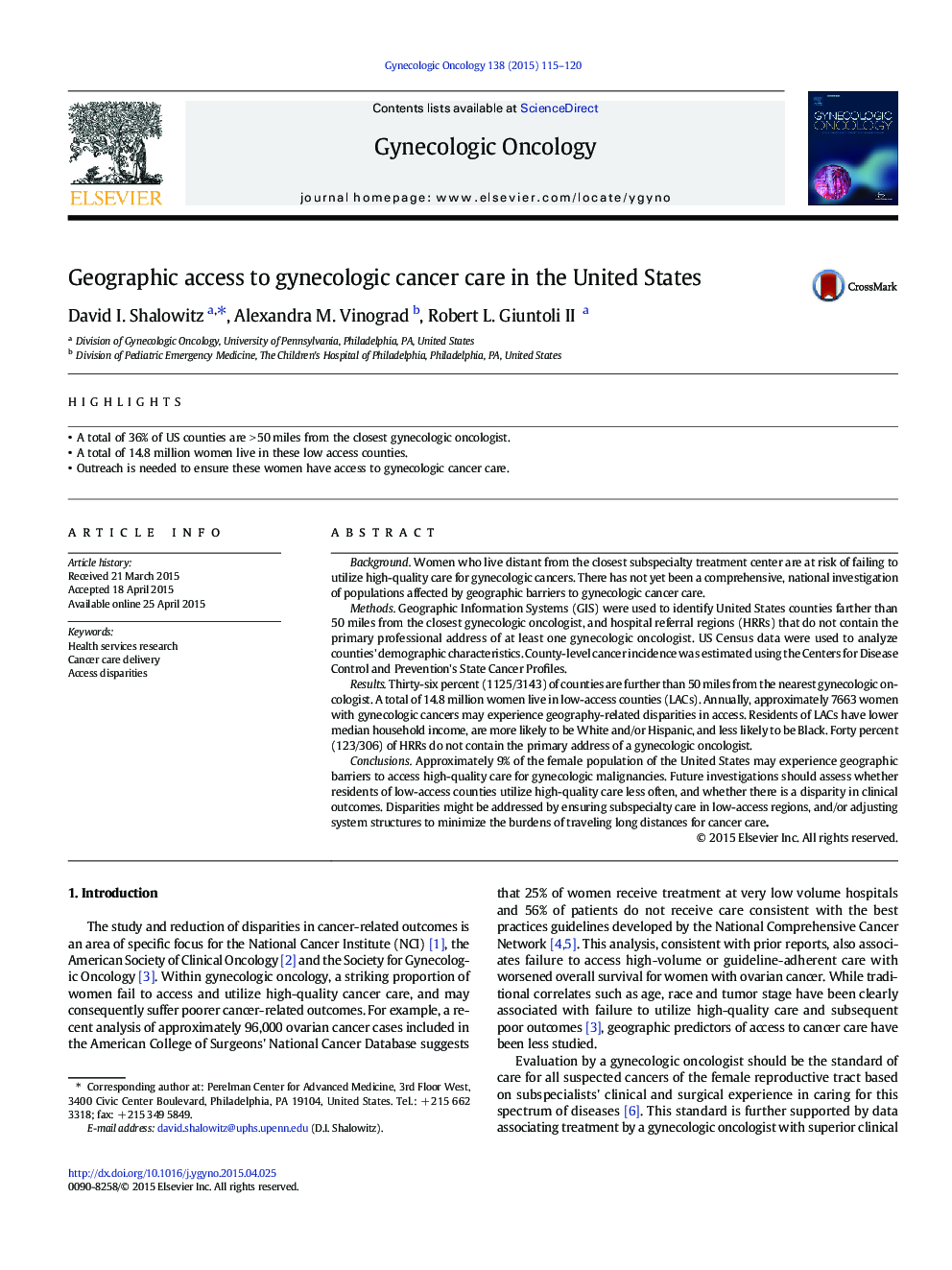| کد مقاله | کد نشریه | سال انتشار | مقاله انگلیسی | نسخه تمام متن |
|---|---|---|---|---|
| 6182650 | 1254024 | 2015 | 6 صفحه PDF | دانلود رایگان |
- A total of 36% of US counties are >Â 50Â miles from the closest gynecologic oncologist.
- A total of 14.8 million women live in these low access counties.
- Outreach is needed to ensure these women have access to gynecologic cancer care.
BackgroundWomen who live distant from the closest subspecialty treatment center are at risk of failing to utilize high-quality care for gynecologic cancers. There has not yet been a comprehensive, national investigation of populations affected by geographic barriers to gynecologic cancer care.MethodsGeographic Information Systems (GIS) were used to identify United States counties farther than 50Â miles from the closest gynecologic oncologist, and hospital referral regions (HRRs) that do not contain the primary professional address of at least one gynecologic oncologist. US Census data were used to analyze counties' demographic characteristics. County-level cancer incidence was estimated using the Centers for Disease Control and Prevention's State Cancer Profiles.ResultsThirty-six percent (1125/3143) of counties are further than 50Â miles from the nearest gynecologic oncologist. A total of 14.8 million women live in low-access counties (LACs). Annually, approximately 7663 women with gynecologic cancers may experience geography-related disparities in access. Residents of LACs have lower median household income, are more likely to be White and/or Hispanic, and less likely to be Black. Forty percent (123/306) of HRRs do not contain the primary address of a gynecologic oncologist.ConclusionsApproximately 9% of the female population of the United States may experience geographic barriers to access high-quality care for gynecologic malignancies. Future investigations should assess whether residents of low-access counties utilize high-quality care less often, and whether there is a disparity in clinical outcomes. Disparities might be addressed by ensuring subspecialty care in low-access regions, and/or adjusting system structures to minimize the burdens of traveling long distances for cancer care.
Journal: Gynecologic Oncology - Volume 138, Issue 1, July 2015, Pages 115-120
